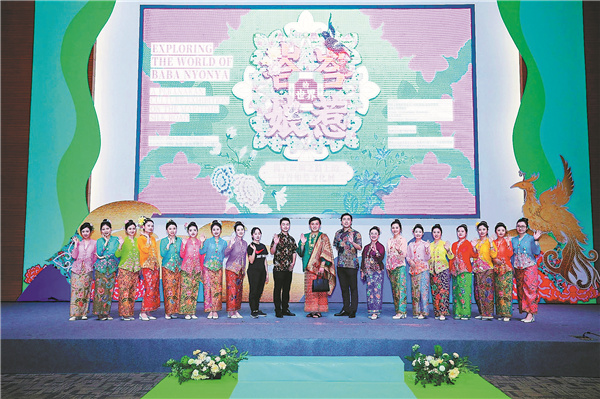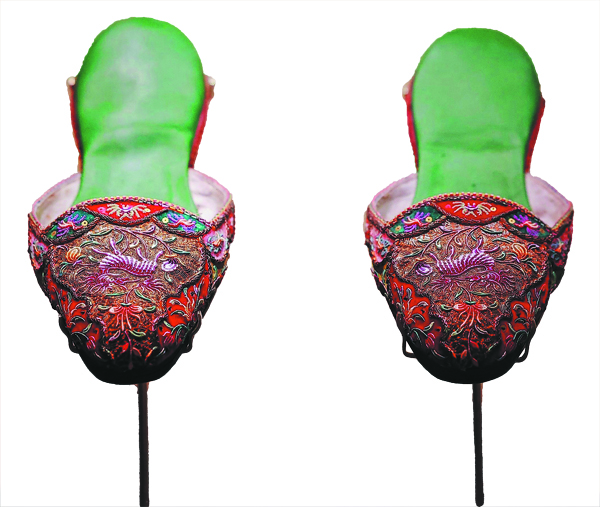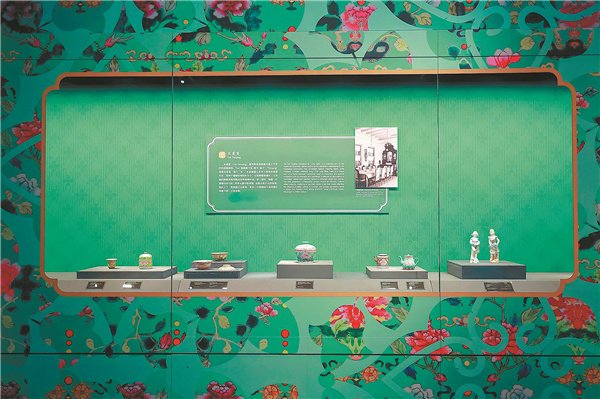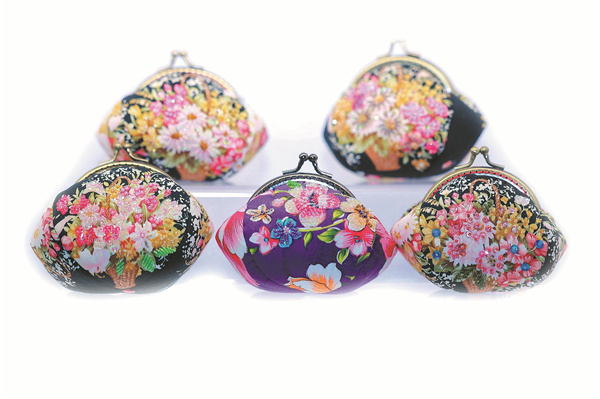Visitors step into the Baba Nyonya world on display in Hainan, exploring the rich history of its heritage
ANN/CHINDA DAILY – A silver engraved cigarette case from Singapore is now displayed in Qionghai, South China’s Hainan province, symbolising Lim Boon Keng’s enduring legacy and cross-border friendships.
Created in 1925 by London firm Henry Perkins & Sons, the case is inscribed: “Presented to Dr Lim Boon Keng, Xiamen University, in tribute to his friends and well-wishers — Singapore, February 25, 1926.”
Lim, a significant Peranakan activist and educational reformer, was the second president of Xiamen University from 1921 to 1937. His efforts strengthened cultural and philanthropic connections between Singapore and China.
Thanks to his grandson Lim Kok Lian’s generosity, the cigarette case is now part of the “Exploring the World of Baba Nyonya” exhibition, showcasing the Maritime Silk Road and Peranakan culture, at the China (Hainan) Museum of The South China Sea.
The Peranakan, also known as the Baba (male) and Nyonya (female), are descendants of Ming Dynasty immigrants from China who intermarried with Southeast Asians, creating a unique blend of Chinese and Malay cultures.
Han Junyuan, a Malaysian-Chinese descendant living in Hainan, visited the exhibition in late March. “I’ve heard of Lim Boon Keng’s legacy as an exceptional Straits Chinese. It was a special moment for me to finally see his related item showcased in the exhibition,” he says.

The exhibition features 124 pieces and sets of cultural relics from the Asian Civilisations Museum and the Peranakan Museum in Singapore, along with 13 pieces of Peranakan furniture from the China (Hainan) Museum of The South China Sea.
From Peranakan portraits to traditional clothing, household items, wedding customs and architectural styles, the exhibition offers a comprehensive view of the vibrant and intricate Baba Nyonya world.
The traditional attire of the Nyonya, known as the Kebaya, is one of the most iconic examples of Baba Nyonya fashion.
This blouse-dress showcases the community’s rich cultural heritage with its intricate embroidery, vibrant colours, and delicate patterns that narrate tales of tradition and craftsmanship.
The Kebaya not only preserves traditional cultural elements but also inspires contemporary fashion trends in Singapore, Malaysia, and Indonesia.
In addition to clothing, accessories play a crucial role in enhancing the beauty and storytelling of Baba Nyonya fashion.
Intricately beaded shoes, ornate jewellery, and delicate hair ornaments are among the accessories that adorn Baba Nyonya garments, adding an extra layer of detail and symbolism to the overall look.

The food culture of the Baba Nyonya community is a testament to the intricate fusion of Chinese traditions and local influences. Their dishes often incorporate auspicious elements drawn from Chinese culture in the hope of bringing luck, prosperity and good fortune to the dining table.
The architecture of the Baba Nyonya community also reflects the unique fusion of Chinese and Malaysian traditions.
In the exhibition area, visitors are greeted with a palette of colours that include white, red and green, each carrying its own significance and cultural heritage. White and red are prominent colours in traditional Chinese Hokkien architecture, symbolising purity, prosperity and good fortune. Green, on the other hand, is considered an auspicious colour in Malaysian culture, representing growth, harmony and balance.
Through the vibrant hues and diverse colour palette of Baba Nyonya architecture, visitors are invited to appreciate the diversity and harmonious blend of traditions that define the community’s unique identity, according to Museum Headlines.
Xin Lixue, director of the China (Hainan) Museum of The South China Sea, says that the exhibition serves as a bridge for deepening cultural exchanges and fostering mutual understanding between China and Southeast Asia.
“Through the exploration of cultural relics and artefacts, visitors are transported back in time to envision the bustling scene of maritime trade routes, witness the rich legacy of Peranakan traditions and appreciate the harmonious integration of Chinese, Singaporean and Malaysian cultural influences,” Xin says.

Clement Onn, deputy director of Curatorial and Research of the Asian Civilisations Museum in Singapore, highlights the Peranakan’s deep-rooted connections to both Chinese traditions and the diverse local communities of Southeast Asia.
“They have not only preserved the customs and practices of their Chinese ancestors but also actively engaged with and assimilated into the multicultural fabric of the regions where they settled, resulting in a vibrant fusion of cultures that is uniquely their own,” Onn says.
Onn hopes that through this exhibition, audiences will gain a better understanding of the Baba Nyonya culture, which will also serve as a catalyst for promoting cultural awareness and cross-cultural appreciation among Chinese audiences.
“By showcasing the integrated cultures of Singapore and other countries in Southeast Asia, the exhibition aims to foster a spirit of curiosity, dialogue and exchange, encouraging audiences to embrace the diversity and richness of Southeast Asian heritage,” he says.
Liu Yuzhu, head of the China Foundation for Cultural Heritage Conservation, underscores the significance of the Baba Nyonya culture as a testament to the vibrant fusion of Chinese and Southeast Asian influences along the ancient Maritime Silk Road.
“The Peranakan culture is celebrated for its uniqueness, richness and colorful tapestry. It stands as a living embodiment of the enduring people-to-people connections and friendships that have flourished among the diverse peoples of Asian countries over the centuries,” Liu says.




